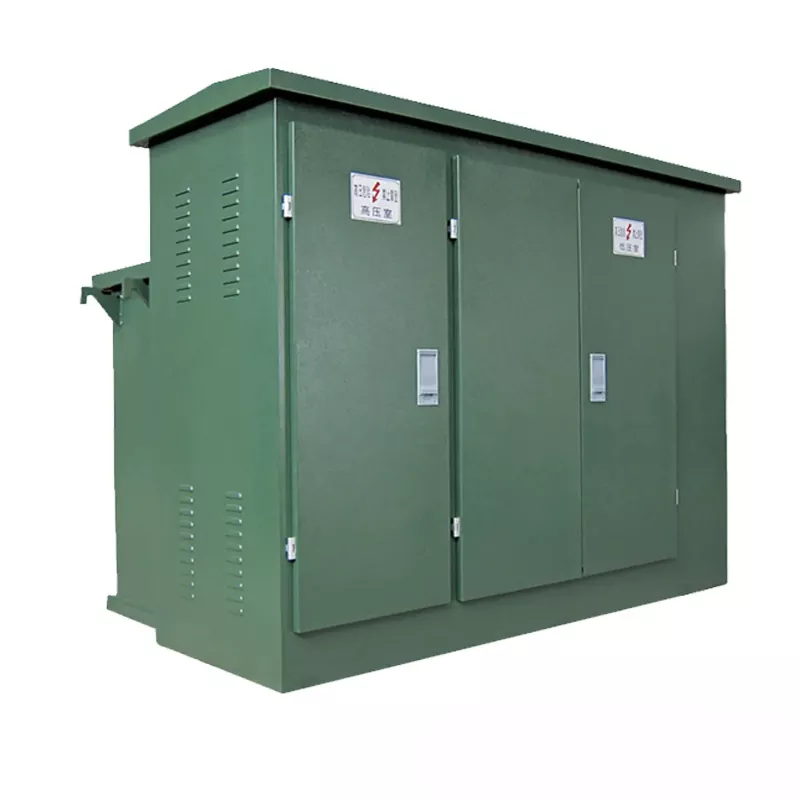Are Box Type Substations the Future of Smart Grid Technology
2025-09-12
For two decades, my career has been centered on navigating the digital landscape, helping users find the answers they need. In recent years, I've noticed a significant surge in queries about modernizing power infrastructure. One question seems to be on everyone's mind: Are Box Type Substations the Future of Smart Grid Technology? From my professional perspective, the data points to a resounding yes. But let's move beyond the hype and examine why.
What Makes a Box Type Substation So Special for Modern Grids
The traditional electrical grid is often criticized for being rigid and centralized. The smart grid, however, is its intelligent, agile counterpart. It demands equipment that is compact, resilient, and data-driven. This is where the Box Type Substation shines. It’s not just a metal enclosure; it's a fully integrated, pre-assembled power distribution solution. I've seen how its modular nature allows for rapid deployment in urban centers, industrial parks, and even remote renewable energy sites, directly addressing the pain points of space constraints and lengthy project timelines that many of our clients face.
How Do the Technical Specifications of a Box Type Substation Translate to Real-World Benefits
When clients ask me about technical details, they aren't just looking for a list of numbers. They want to know how those numbers solve their problems. A high-quality Box Type Substation is defined by its core parameters. Let’s break down what you should be looking for and why it matters.
Key Product Parameters:
-
Modular Design: Allows for easy expansion and reconfiguration as your power needs grow.
-
Compact Footprint: Saves invaluable real estate, a critical factor for city utilities and factories.
-
Advanced SCADA Integration: Provides real-time monitoring and control, which is the very heart of a smart grid.
-
Robust Enclosure (IP Rating): Offers superior protection against harsh weather, dust, and vandalism, ensuring reliability.
To give you a clearer picture, here is a comparison of typical specifications you might encounter:
| Feature | Standard Range | How It Solves a Customer Pain Point |
|---|---|---|
| Voltage Level | 11kV to 33kV | Designed to seamlessly integrate into existing medium-voltage networks. |
| Transformer Rating | 500 kVA to 2500 kVA | Provides the right capacity for diverse applications, from small communities to large industries. |
| IP Protection Rating | IP54 to IP55 | Solves the critical issue of equipment longevity by protecting against dust and water ingress. |
| Enclosure Material | Galvanized Steel or Aluminum | Addresses corrosion concerns, significantly reducing maintenance costs and headaches. |
Can a Box Type Substation Truly Handle the Demands of Renewable Integration
This is a question I hear constantly. The old grid struggles with the intermittent nature of solar and wind. The smart grid must be flexible. We designed our Toonice brand Box Type Substation with this exact challenge in mind. Its innate ability to host advanced monitoring and control systems makes it a perfect gateway for renewable sources. It doesn't just handle the demand; it actively manages it, ensuring stability and maximizing the use of clean energy. This isn't a future concept; it's what our Toonice systems are doing in the field today for our partners.
What Should You Look for in a Box Type Substation Partner
Choosing the right technology is only half the battle. You need a partner, not just a supplier. You need a team that understands the intricacies of power systems and can offer reliable, long-term support. This is the philosophy we've built Toonice upon. We don't just manufacture a Box Type Substation; we deliver a comprehensive power solution backed by deep engineering expertise and a commitment to unwavering customer support.
The future of the smart grid is not a distant dream. It's being built today with intelligent, robust, and adaptable components. The compact and feature-rich Box Type Substation is undoubtedly at the forefront of this transformation.
Are you ready to explore how a Toonice Box Type Substation can future-proof your power distribution network? Contact us today for a personalized consultation and let our experts help you build a smarter, more resilient grid.





